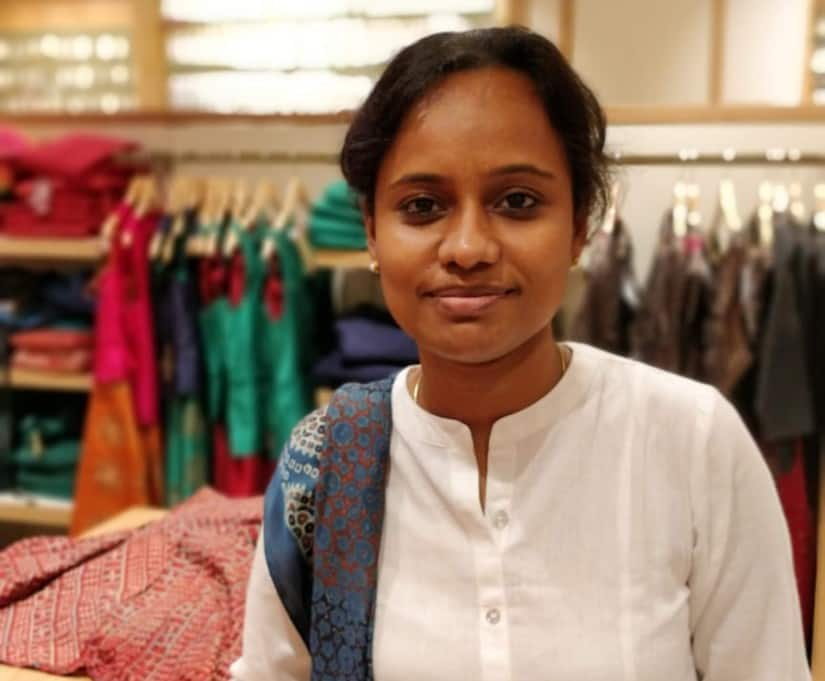If we look at our country’s politics, there has been no one from the scheduled castes who has become the Prime Minister of India till date, let alone a scheduled caste woman. Political engagement of Dalits is necessary, but more importantly, it has to include Dalit women leadership in political spaces. The panel on ‘ Dalit Women in Politics: Past, Present and Future ’— organised by The Blue Club, a collective for providing mentorship and support to women filmmakers, and All India Dalit Mahila Adhikar Manch (AIDMAM) — was put together with the above vision in mind. More than 60 Dalit women leaders from across India participated in the conference. Firstpost will be publishing some of the important speeches from this panel. This is the sixth of the series of speeches . *** By Semmalar Jebaraj I see this meeting as a way to consolidate power by Dalit women, because one of the most important teachings of Dr BR Ambedkar is to organise, which still seems very difficult to achieve among Dalit women. Firstly, I would like to appreciate the efforts taken by the women who made this happen. I find the consolidation of power among Dalit women a necessity. While speaking about Dalit women in politics, we should also talk about the consolidation of power for Dalit women who are working in various political parties. There is a need to talk about Dalit feminism now, so this is a great opportunity for young Dalit women to unite. In recent times, various strategies are being used. With the intervention of social media and other factors, there is a dire need for Dalit women to organise. [caption id=“attachment_6237141” align=“alignnone” width=“825”]  Semmalar Jebaraj[/caption] We need to ask ourselves: Are we here just to destroy the patriarchy, or as Dr Ambedkar said, “the annihilation of caste”? I strongly believe patriarchy in India is a by-product of caste. They go hand-in-hand. It is different in Western nations, where they have also created different narratives of feminism for socially oppressed communities, such as black feminism to counter privileged white women’s feminism. When we as Dalit women identify our enemies, they sometimes include both Dalit men and caste Hindu women, sadly. While it would be totally unfair to equate both, it still has to be critically analysed. The very reason so many men are gathered here itself is a positive thing and should be celebrated, because we need to acknowledge that Brahminism is the actual enemy here and to annihilate that, we need Dalit men to stand in solidarity with us.
I think the annihilation of caste is only possible when we include Dalit men and non-Dalit women, who have given up their Brahmimical mindset.
We also need to admit that we lack strategy. When we talk about Bahujan and Dalit women in politics, there is a huge vacuum. I was very young when the National Federation of Dalit Women started, and since then, there have been different political movements which took place at the international, national and regional levels, but the problem is that there was a lack of connection between all three. They were not able to communicate with the Dalit women at the grassroots level. So where do we lag behind? Are our strategies failing because we follow the same old practice of attacking and antagonising instead of devising new strategies, which include politicising young people? We cannot limit our politics to just electoral politics; we must consider it in a broader sense, because the very idea of us uniting together and asserting our rights here itself is a political act. The economic and social difficulties in electoral politics are common everywhere, but let’s work on the other things we can, like Priya said — politicise young students. While we certainly cannot promote a particular political party, we can help young people to identify the real foe, which is Brahminism. Once they have that understanding of caste, they might develop the intelligence to choose the right party. We need to let them know we are at an ideological war with Brahminism, and hence right-wing parties like the Bharatiya Janata Party (BJP) promoting what we stand against should be opposed vehemently. Our motive is to annihilate caste, and for that we need to include as many people as possible who believe in our ideology and movement, to achieve it together. Electoral politics still is a difficult arena for Dalit women and other socially backward communities, as compared to the economically and socially privileged ones. It is indeed a long journey, and so how we are going to strategise our politics along with Dalit men and other caste and class-conscious non-Dalit women is important. While we complain about Dalit women not voting for fellow Dalit women in politics, we need to understand the need to politicise and educate them. Their idea of who a political leader is, influenced by the media and other means, has to be destroyed. We are always scared of affiliating with people from different backgrounds, believing we’ll lose our identity. But here I would like quote Dr BR Ambedkar, who has always inspired me. He was in the Congress, which used to be as right-wing as the BJP is right now. Yet, he said, “I am like a rock (stone) which does not melt but turns the course of rivers. Wherever I may be, in whatever company I may find myself, I would never lose my separate identity. If anybody asks my co-operation, I would gladly give it for a worthy cause.” If as Dalit women we can work with this vision, we can work with anybody and still not lose our identity. And I would like to remind everyone again that Brahminism is our only enemy; we need to unite and organise ourselves to uproot it. *** (Speech transcribed by Bakhya Kaliaperumal.) Semmalar Jebaraj is a professor at Loyola College, Chennai


)

)
)
)
)
)
)
)
)



